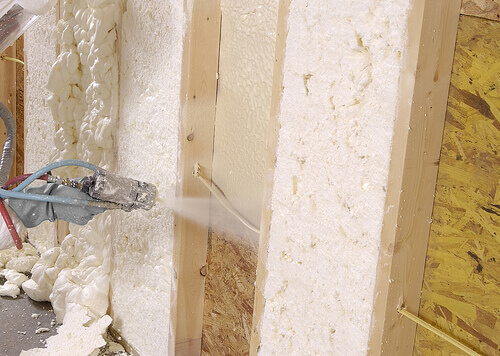Reducing your carbon footprint and saving money simultaneously sounds like a win-win, right? Well, it is entirely possible with the right approach to home insulation. Among the various options available, spray foam insulation services stand out as a particularly effective solution for both environmental and financial reasons. Spray foam insulation is a popular choice for homeowners looking to enhance the energy efficiency of their properties. This innovative insulation material is composed of two main components, polyurethane and isocyanate, which are combined at the application site through a process involving pressure and heat. Once mixed, these components react to form foam, which expands to fill cavities and gaps within walls, ceilings, and floors, creating a seamless thermal barrier. One of the primary benefits of spray foam insulation is its superior insulating properties compared to traditional insulation materials like fiberglass or cellulose. Spray foam effectively seals off air leaks and provides a high R-value per inch of thickness, resulting in better temperature regulation and reduced energy consumption.

By minimizing heat transfer, spray foam helps keep your home warmer in winter and cooler in summer, reducing the need for constant heating and cooling and ultimately lowering your energy bills and learn more at https://smarthome-insulation.com/pembroke-pines-fl/spray-foam-insulation/. Moreover, the air-sealing properties of spray foam insulation contribute to improved indoor air quality by preventing the infiltration of dust, pollen, and other allergens from outdoors. This can be particularly beneficial for individuals with respiratory issues or allergies, as it helps create a healthier living environment. From an environmental standpoint, choosing spray foam insulation can significantly reduce your carbon footprint. By improving energy efficiency and reducing the consumption of fossil fuels for heating and cooling, spray foam insulation helps mitigate greenhouse gas emissions associated with residential energy use. In addition, spray foam’s durability and longevity mean that it can last for many years without needing replacement, further reducing environmental impact by minimizing material waste. Another advantage of spray foam insulation is its versatility and ability to conform to irregular shapes and contours. This makes it ideal for insulating hard-to-reach areas such as attics, crawl spaces, and around plumbing, electrical, and HVAC components.
By effectively sealing off these spaces, spray foam insulation helps prevent moisture infiltration and potential damage from mold, mildew, and rot, thereby extending the lifespan of your home’s structure and reducing the need for costly repairs. While the initial cost of spray foam insulation installation may be higher than that of traditional insulation materials, the long-term savings and benefits far outweigh the investment. In addition to lower energy bills and reduced maintenance costs, many homeowners may also qualify for tax credits, rebates, or other incentives for implementing energy-efficient upgrades such as spray foam insulation. When considering spray foam insulation for your home, it is essential to work with qualified professionals who have experience in its installation. Proper application is crucial for achieving optimal results and ensuring the safety and effectiveness of the insulation. By hiring reputable contractors who use high-quality materials and adhere to industry standards, you can maximize the benefits of spray foam insulation and enjoy long-term savings and comfort in your home. Spray foam insulation services offer a practical and sustainable solution for homeowners looking to reduce their carbon footprint and save money on energy bills.